According to the 2014 USDA-NASS Organic Survey, Washington State was the largest U.S. producer of organic apples, harvesting 429 million pounds (over 90% of U.S. fresh production) from about 14,000 acres, with an estimated farm gate crop value of $210 million. In Oct. 2016, I spoke at an organic orchard floor workshop held in Wenatchee, WA, that covered organic weed and nitrogen management (view a PDF of the presentation here). This article is a summary of the practices commonly used in central Washington where organic tree fruit production is concentrated.
Nitrogen Management
The nitrogen (N) and weed fertilization programs for most organic tree crop growers in Washington are often interconnected in that tillage for weed control incorporates the compost and fertilizer. Many growers use the most cost-effective N strategy, currently consisting of “composted” chicken manure, applied in fall and/or spring, plus supplemental feather meal or other higher concentration N fertilizer, generally applied in spring. See Table 1 for a list of selected compost and organic fertilizer products available to growers.
Table 1. Selected bulky and specialty fertilizers used in organic Washington orchards.
| Product | Typical N-P2O5-K20 | Ingredients |
| Compost/Manure/Fertilizer Products |
| Chicken manure “compost” | 4-3-4 | Partially composted chicken manure |
| Dairy compost | 1.5-1.8-1.3 | Composted dairy manure |
| Dried poultry waste | 4.5-2.7-1.4 | Dried chicken manure |
| Perfect Blend | Variable, 4-7% N | Mostly chicken manure, plus feather meal, fish, sulfur, sulfate of potash |
| Royal Organic Products: | | |
| Royal Classic | 1.2-0.4-0.7 | Green waste + herbal matter |
| Soil Supplimint | 2.4-0.7-2.4 | Mint biomass |
| Stutzman Farms: | | |
| Nutri-Rich (pelleted) | 4-3-2 | Dried poultry waste (DPW) |
| Nutri-Rich (granular) | 8-2-4 | DPW, blood, feather meal, sulfate of potash |
| Sup'r Green | 3-2-2 | Composted chicken manure |
| Specialty Fertilizer Products |
| Feather meal | 13-0-0 | |
| ProNatural Dry | 10-1-0 | Feather, crab, and shrimp meals |
| 6-2-1 | Feather, alfalfa, shrimp, and fish bone meals |
| True Organic Products (Calif.) | Variable, to 13% N | (Many products; pelleted) Protein meals: Feather, meat, bone, fish |
| Liquid Fertilizers (Injection) |
| BioLink | 3-3-3 | Hydrolyzed soy protein |
| Fish products | Variable | Liquid fish, hydrolyzed fish |
| True Organic Products (Calif.) | 4-0-2 | Reduced sugar molasses + fish |
The manure is composted enough to kill pathogens for food safety concerns, but not enough to immobilize all the N in organic matter. Most finished compost has about 1.0 to 1.5% total N and the N is slowly mineralized in the soil over many years, so it is not considered a fertilizer unless used for many consecutive years. But the chicken compost coming from in-state and out-of-state farms often has 3-4% total N, and plant-available nitrogen will be about 50% in the first year, compared to about 10% for finished compost. Typical application rates are 2-3 tons per orchard acre, concentrated in a 10- to 20-inch band on either side of the tree row and usually not in the grass alley. A 2-ton application of this chicken manure at 3.25% N and 25% moisture content may contain nearly 100 lbs. of total N. In the first year after application, it will likely provide about 50 lbs. of plant-available nitrogen per ton applied, assuming it is incorporated the day it is applied. Growers should obtain recent nutrient analyses of compost and manure products and should also know the % moisture.
About a quarter of the total N in the chicken manure product may be present as ammonium, which is subject to rapid loss to the air (as ammonia gas) if not incorporated into the soil with tillage, or through irrigation. Once in the soil, the ammonium quickly converts to nitrate, which is taken up by tree roots and can also be lost to leaching if over-irrigation occurs. This available N is ready for tree use shortly after application, while the slower release N will be available during the rest of the year and in subsequent years.
With an organic N source, getting the timing right can be challenging. Trees assimilate N from the soil when they are actively growing (spring and summer) and not during the dormant season. There is generally heavy demand in spring to supply N for the new vegetative growth, and in late summer or early fall to build tree N reserves for the next spring. Past research has shown rapid uptake of available N a few weeks before apple harvest without affecting fruit quality compared with little tree uptake later in the fall when the trees are senescing and heading into dormancy. Fall applications can result in substantial loss to leaching over the winter as soil temperatures are still generally high enough for conversion of some N to the nitrate form, which is not held by the soil.
Manure and compost bring in other nutrients and harmful salts. Some growers are finding that phosphorus (P) becomes excessive – a ton of broiler litter containing 80 lbs. total N/ton will also contain about 60 lbs. of P2O5 (26 lbs. actual P), and P not taken up by plants tends to accumulate in the soil. Very high P levels in the soil can interfere with availability and uptake of other nutrients, especially iron and zinc, which could lead to plant deficiencies. There are now more specialty fertilizers from which to choose that only apply the targeted nutrients, and some organic growers are using these and reducing or eliminating compost applications. But compost applications can be made every 2-3 years to maintain the “carbon” cycle and provide a food source to keep soils biologically active and diverse.
Weed Management
The most common method of weed management in organic orchards in the region is with a Wonder Weeder, which is a Lilliston-type rolling cultivator (Fig. 1). This implement is fixed so it has no hydraulic arm retraction to move it back and forth into the tree row, as a Weed Badger or similar implement does. But it does have a steel spring shear bar that cuts off weeds between the trunks at ground level and then bends back when it contacts the trunk to avoid damage. This can work well in older trees with wider in-row spacing, but is not well-suited to trees closer than 4 feet apart in the row. Care must be taken with young trees as they can be damaged by the shear bar. Use in cherries is limited due to concerns about bark wounds that could lead to bacterial canker infection. In the center of the tree row, a Weed Badger or other articulating cultivator is more effective for large weeds and perennial weeds (Fig. 2). In-row cultivation has the added benefit of disrupting rodent tunnels. Where drip tubing is used (usually with inverted microsprinklers), the tubing must be suspended above the ground to prevent damaging it with cultivation (Fig. 3). Suspending the tubing is easiest in trellised high-density orchards.
In-row tillage implements operate at about a 3-4 inch depth to kill weed crowns, but this also cuts some tree roots. For this reason, a few growers use wood chip mulch (applied with a commercial mulch spreader) as an alternative to tillage, which provides a healthy environment for tree root growth and supplies nutrients as it slowly breaks down (Fig. 4). The wood chips, which need to be reapplied every 1-3 years to provide on-going weed control, are effective against annual weeds and are generally not conducive to vole tunneling. Wood chips do not control most perennial weeds. Some growers instead use landscape fabric, which provides more durable weed control but creates attractive vole habitat and cuts the soil off from any carbon inputs. To address this, the fabric can be opened during the winter to expose the voles to predation and to allow for compost or other amendments to be applied. This is a costly process, but the fabric can provide more control of certain perennial weeds such as quackgrass than other methods. For both methods, cultivation adjacent to the mulch may be used to incorporate the compost and fertilizer (Fig. 5), but then roots are still cut and the cultivator cannot come too close to fabric – this leaves a line of tall weeds that hide the fabric edge. The weeds can be mowed, but the mower can catch and shred the fabric.
There are several other weed control tactics that might be combined for more effective weed control. Growers have renewed interest in the “mow and blow” method, in which the mower moves clippings to the tree row, suppressing weed seed growth and adding residue that breaks down to feed microbes and add nutrients. If only a thin layer is periodically applied, the clippings will not provide cover for voles but also may not control weeds as effectively. Propane flamers desiccate leaf cells of primarily broadleaf weeds, but flamers have worker safety concerns and high fuel costs. Organic herbicides that are currently available can help, but they are generally expensive and not reliably effective, especially on grasses.
Relevance to Sacramento River District Orchards
During the three-year transition to organic production, leaf N and production often decline significantly. An important cause of both problems is likely insufficient N uptake. No-till in our orchards has many benefits, but applying manure to soil without incorporation may result in reduced mineralization of N as well as substantial loss of N to ammonia volatilization. Even if incorporated the same day, up to 25% of the N may volatilize during transport, loading, spreading, and sitting on the soil (ammonia smell). Delaying just one day may result in a 50% loss of the volatile ammonia N. Irrigation with a least ½ inch of water within a few hours can wash ammonium-N into the soil and reduce volatilization losses, but incorporation retains more N. Studies show that manure should be incorporated or irrigated no more than 6 hours after application for poultry manure and 12 hours for dairy manure. However, with no accompanying weed control, the resident vegetation will quickly outcompete the tree roots for much of the N. Banding and the use of partially composted manure would likely reduce some ammonia volatilization. An obvious solution is to simply use more manure, but this adds to the high cost of organic fertilization.
Some growers alternate Wonder Weeder and Weed Badger to control different weeds and disrupt rodent tunnels. But cultivators may also damage buttress roots, which come from the root flare at the base of the trunk. New tools being used in Europe, such as weed brushes, have not been tested much in the U.S. but might be a good addition for organic orchard systems. Winter annual legumes in the alleys can be a major source of N. Winter annual legumes are another option in the Sacramento Delta. Currently, no one practice is going to provide satisfactory long-term organic weed control. Approaches that integrate multiple weed control tactics along with fertility considerations are needed.
Thanks to David Granatstein (Center for Sustaining Agriculture and Natural Resources, Washington State University) for providing assistance on this paper.
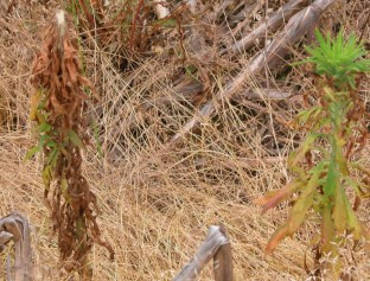
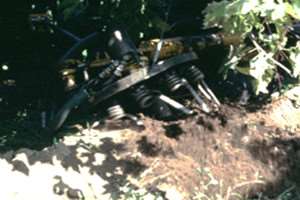
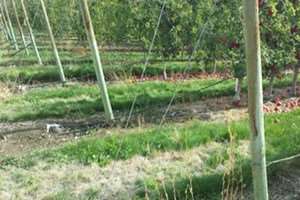
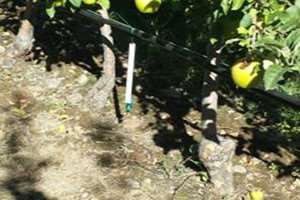
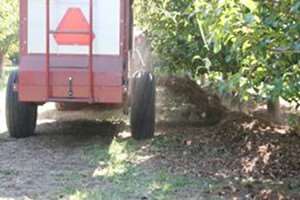
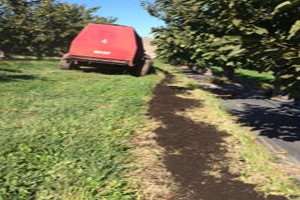
Source: ucanr.edu